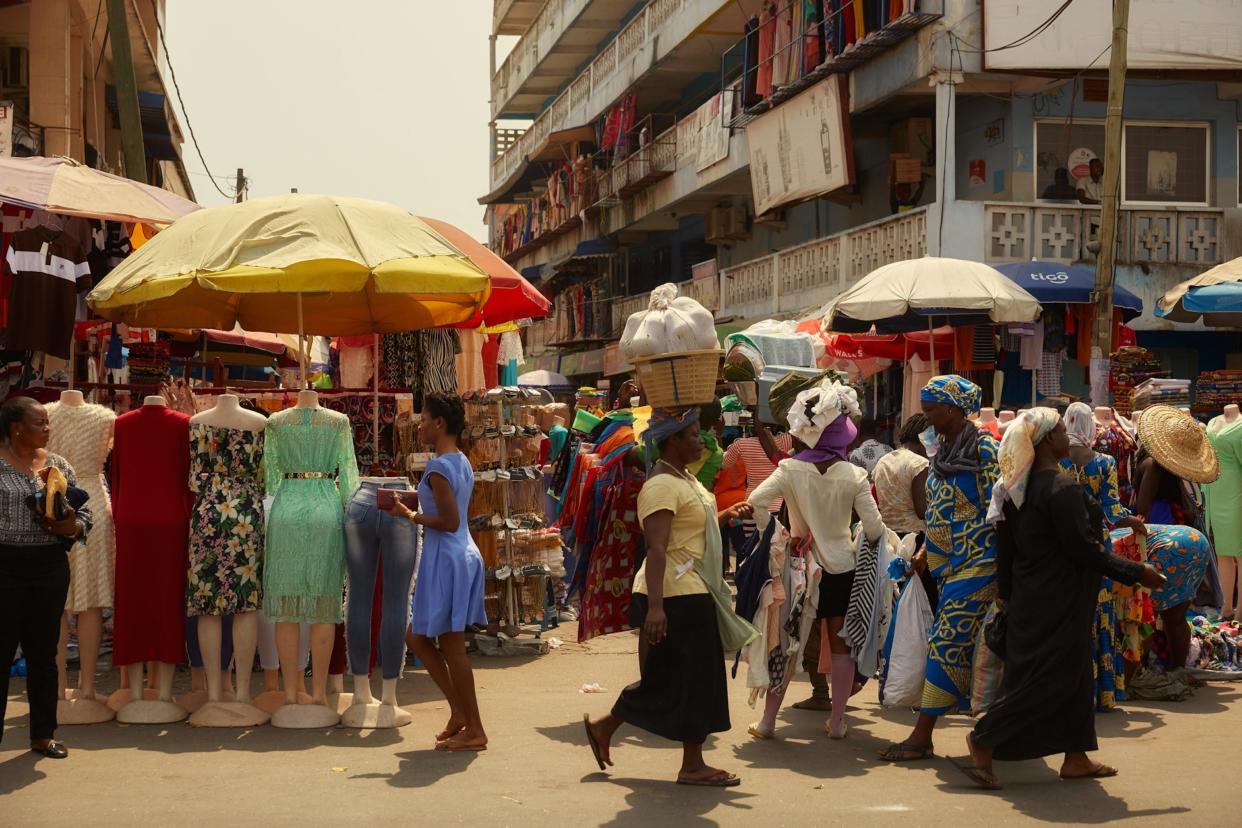Collina Strada, Browns Address the Secondhand Clothing Market’s Waste Problem

LONDON — Browns wants to keep up the conversation around fashion’s waste problem.
The British retailer has joined forces with up-and-coming designer and activist Collina Strada to create an exclusive capsule collection using deadstock fabrics sourced from the Kantamanto Market in Ghana, the world’s largest secondhand clothing market by volume of goods. Beyond creating another upcycled capsule, the project aims to make a point about the social and environmental implications of the secondhand clothing market in Ghana.
“I wanted to educate the consumer on where their secondhand clothing goes and the effects it has on others,” said Collina Strada’s founder Hillary Taymour, who worked with the OR Foundation, a U.S.-based charity working toward improving the fashion industry, to learn more about the reality of the situation in the Kantamanto Market.
According to the OR, a minimum of 15 million items of clothing passes through Kantamanto every week — 40 percent of which end up in Ghana’s landfills, open dump sites and the ocean within two weeks of its arrival, instead of being reused or recycled.
For the capsule, Taymour used deadstock T-shirts sourced from the market, tie-dyed and recreated into long T-shirt dresses or midi skirts.
“It’s more of a conversation of how do we successfully sell individual pieces on an e-commerce platform. The items have to be consistent, which is not easy to do when you are giving new life to deadstock,” said the designer, who has been working toward marrying her fashion collections with activism.
She is focusing on stepping away from seasonal collections, supporting Black and POC communities and expanding her label’s own community in order to be in a position “to help on the ground, locally.”
Browns’ head of women’s wear Heather Gramston also pointed to agile, sustainability-focused labels like Taymour’s as more apt to stand out and resonate with consumers in fashion’s new landscape. “Excitingly we are seeing more synergy as young designers are building businesses that are sustainable from their core, rather than having to adapt their business model to fit this criteria,” she said.
Best of WWD
Sign up for WWD's Newsletter. For the latest news, follow us on Twitter, Facebook, and Instagram.

